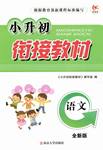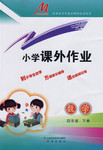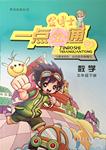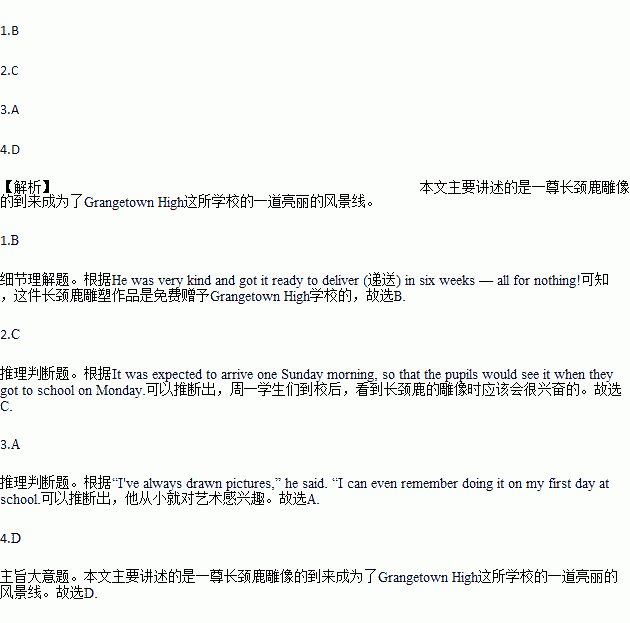题目内容
The pupils of Grangetown High have been busy getting to know their newest and tallest classmate — a 7-meter-tall giraffe outside their school.
The giraffe is a huge sculpture (雕像) made by a local artist. The school's headmaster noticed the sculpture in the artist's garden as he drove past one day, and thought it would be perfect for his school. “I knew everyone would love it,” he said, “because our basketball team is known as the Grangetown Giraffes, and they wear giraffes on their shirts. So I asked them to write a letter to the artist, asking how much it would cost to buy the giraffe. He was very kind and got it ready to deliver (递送) in six weeks — all for nothing! It was expected to arrive one Sunday morning, so that the pupils would see it when they got to school on Monday — at that time they had no idea that we were getting it.”
The artist, Tom Bennett, was a university professor (教授) of chemistry before he left that job in 2006 and only took up metalwork a couple of years ago. “I've always drawn pictures,” he said. “I can even remember doing it on my first day at school — I drew a horse. I wanted it to be the best horse picture ever, but I don't think I succeeded.” Tom's first metalwork was a bicycle for two that he and his wife could go cycling on together. “It was the most uncomfortable bike ever created,” he said, “so I gave up making bicycles and went into sculpture instead.”
Meanwhile the pupils at Grangetown High are very happy with their new classmate. “We're going to hold a competition to give it a proper name,” said one girl. “Everyone likes the expression on its face, so perhaps that will give us some ideas.”
1.According to the text, the giraffe _____.
A. was as tall as a basketball player
B. was given to Grangetown High for free
C. was sent to Grangetown High on Monday
D. was specially made for a basketball team
2.When the pupils got to school on Monday, they probably felt _____.
A. shy B. sad
C. excited D. confident
3.What can we learn about Tom Bennett?
A. He showed interest in art at an early age.
B. He was good at drawing, especially horses.
C. He visited Grangetown High as a professor.
D. He learned a lot about sculpture at university.
4.What's the main idea of the text?
A. It was a difficult job to name a giraffe.
B. Tom Bennett is well-known as a sculptor.
C. The Grangetown Giraffes is a strong team.
D. A metal giraffe arrived at Grangetown High.
 学而优衔接教材南京大学出版社系列答案
学而优衔接教材南京大学出版社系列答案 小学课堂作业系列答案
小学课堂作业系列答案 金博士一点全通系列答案
金博士一点全通系列答案
